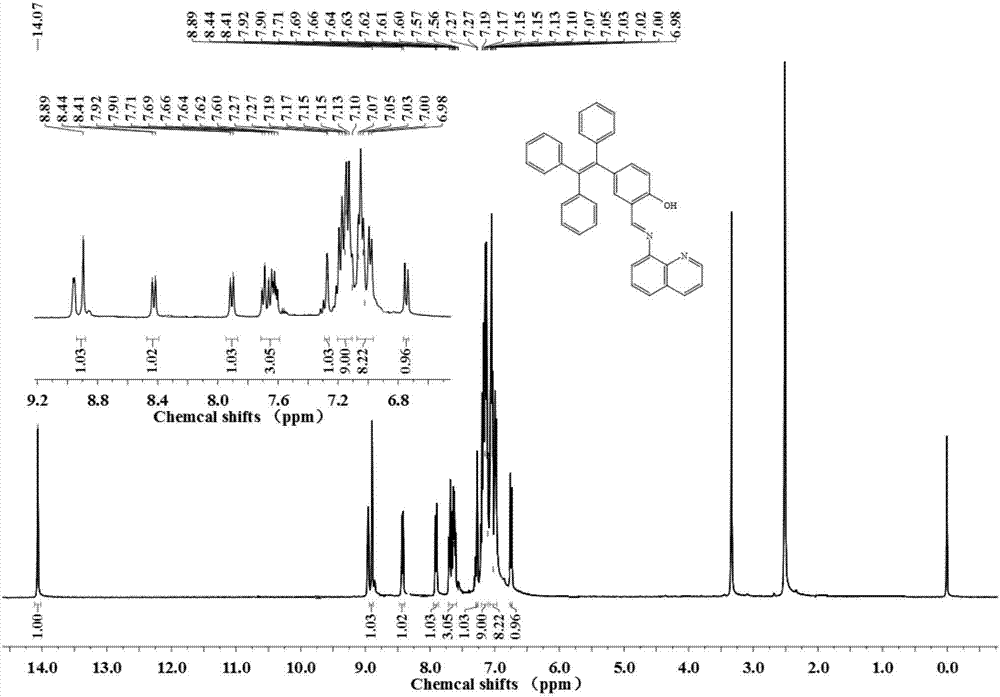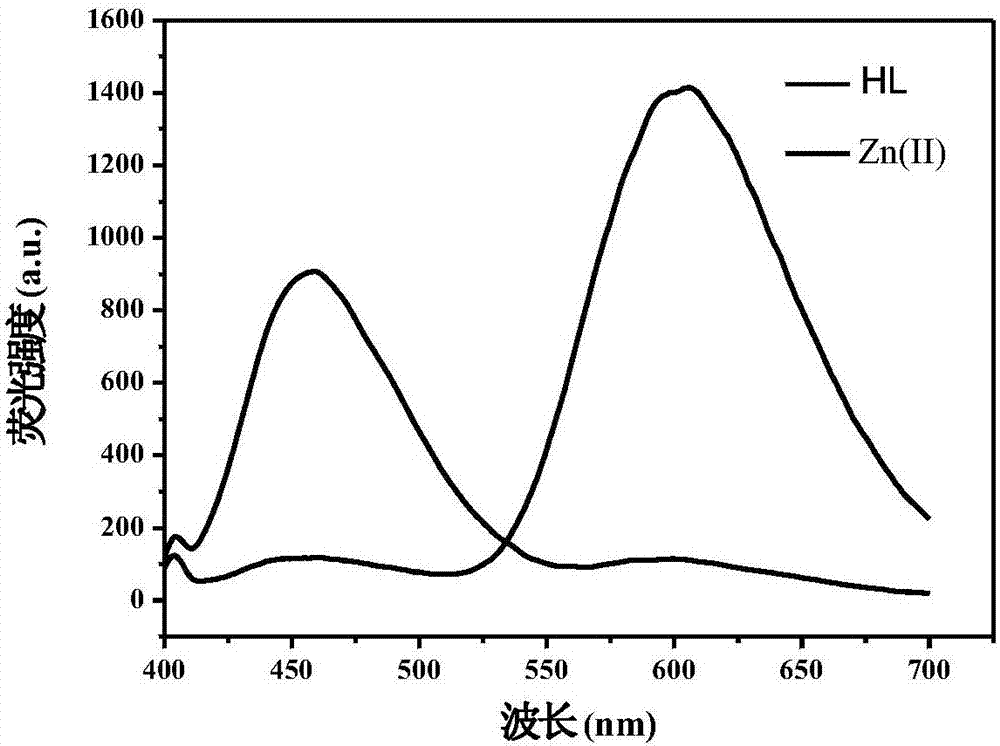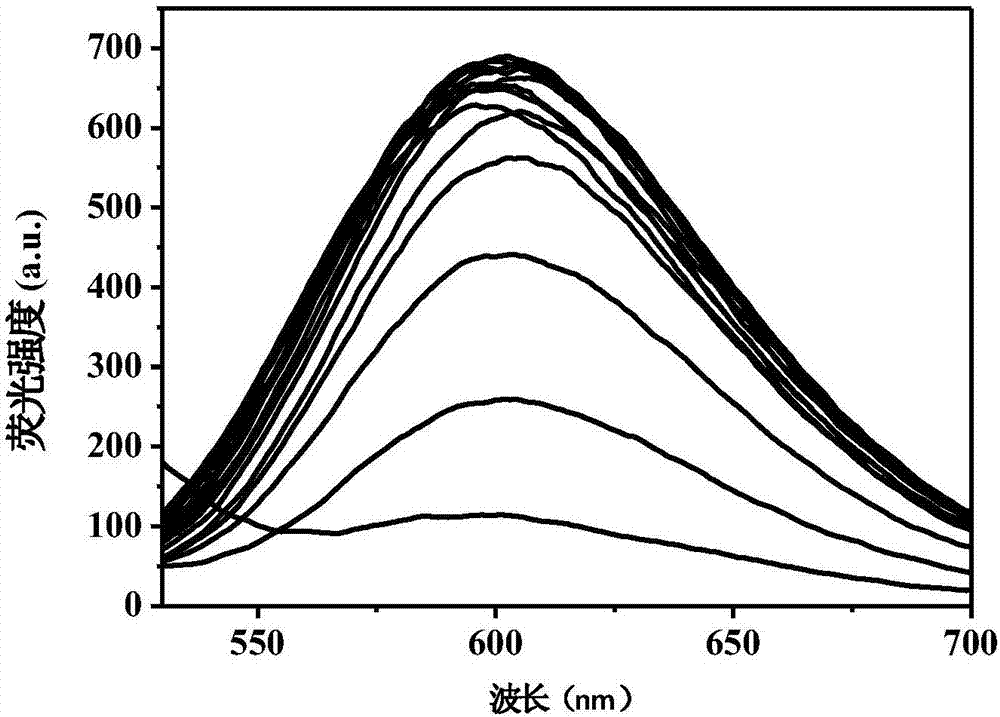Tetraphenyl ethylene Schiff base red-light zinc ion probe and preparation method and application
A tetraphenylethylene and Schiff base technology, applied in the field of analytical chemistry, can solve problems such as probe spectrum and instrument performance interference, and achieve the effects of strong resistance to other molecular interference, low synthesis cost, and reduced signal-to-noise ratio.
- Summary
- Abstract
- Description
- Claims
- Application Information
AI Technical Summary
Problems solved by technology
Method used
Image
Examples
Embodiment
[0029] Synthesis of tetraphenylethylene Schiff base red light zinc ion probe compound HL proposed by the present invention
[0030] The synthetic route of compound HL is as follows:
[0031]
[0032] 1. Synthesis of Compound A:
[0033]
[0034] Diphenylmethane (12mmol, 2.02g) was dissolved in 50ml of tetrahydrofuran, at minus 20°C, under the protection of nitrogen, 2.5M n-butyllithium (10mmol, 4ml) was added dropwise, and 4-methoxybenzophenone (12mmol , 3.03g) was warmed up to room temperature, stirred for 3 hours, quenched with water, extracted with dichloromethane, the solvent was spun off, added toluene, p-toluenesulfonic acid (1.8mmol, 0.342g), refluxed for 6 hours, cooled to room temperature, 5% Wash twice with sodium bicarbonate, do with anhydrous magnesium sulfate, spin out the solvent to obtain a yellow crude product, and recrystallize to obtain compound A as a white solid product with a yield of 80%. 1 H NMR (400MHz, DMSO-d 6 )δ(TMS,ppm):7.19-7.06(m,9H),7.03...
PUM
 Login to View More
Login to View More Abstract
Description
Claims
Application Information
 Login to View More
Login to View More - R&D
- Intellectual Property
- Life Sciences
- Materials
- Tech Scout
- Unparalleled Data Quality
- Higher Quality Content
- 60% Fewer Hallucinations
Browse by: Latest US Patents, China's latest patents, Technical Efficacy Thesaurus, Application Domain, Technology Topic, Popular Technical Reports.
© 2025 PatSnap. All rights reserved.Legal|Privacy policy|Modern Slavery Act Transparency Statement|Sitemap|About US| Contact US: help@patsnap.com



